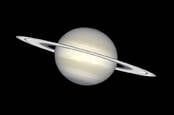This article is more than 1 year old
No lie-in this morning? Thank the Moon's gravitational pull
Complex tidal forces have drawn out the day
Are you tired and grumpy after such a long day? Well, now you know what to blame: the Moon.
Scientists from the University of Wisconsin–Madison and Columbia University, in the US, found that days on Earth grew longer as the Moon inched further away. Some 1.4 billion years ago, a day lasted just over 18 hours, the eggheads concluded.
Previous simulations showed that when the satellite formed 4.5 billion years ago, it was just 22,500 kilometres (13,981 miles) away. Now, it’s about 400,000 kilometres (248,548 miles) away. Over time, as it spun, the tidal forces between the Earth and Moon has pushed the satellite further away.
“As the moon moves away, the Earth is like a spinning figure skater who slows down as they stretch their arms out,” Stephen Meyers, coauthor of the study and a geoscience professor at the University of Wisconsin-Madison, said this week.
The results have been published in the Proceedings of the National Academy of Sciences. The researchers used Milankovitch climate cycles and statistical modelling to study the relationship between the Earth and the Moon.
Milankovitch cycles describe the climate changes caused by the effect of the cyclical variation of the Earth’s orbit caused by its gravitational interactions with other planets and objects in the Solar System.
Our orbit stretches between being more circular and elliptical. The distance between the Earth and Sun varies, and the amount of solar radiation received on Earth also changes affecting the climate.
These patterns are captured in Earth’s rocks, and the records can be used for astrochronology.
Orbital maneuvers in the dark
“One of our ambitions was to use astrochronology to tell time in the most distant past, to develop very ancient geological time scales,” said Meyers. “We want to be able to study rocks that are billions of years old in a way that is comparable to how we study modern geologic processes.”
The Moon is moving away at a rate of 3.82 centimeters per year. Using this information, and data gleaned from two stratigraphic rock layers: the 1.4 billion-year-old Xiamaling Formation from Northern China and a 55 million-year-old record from Walvis Ridge, in the southern Atlantic Ocean, the scientists could extrapolate backwards to work out the history of the Moon and Earth.
They could work out the direction of the axis of rotation of Earth, the shape of its orbit in the past (to work out the length of the days on Earth) and its distance to the Moon. As the Moon grew more distant, the days got longer.
The Earth holds the Moon's orbit by pulling it through gravitational attraction. The Moon also exerts a pressure onto the Earth causing tides and its side to bulge outwards. Since Earth rotates faster than the Moon orbits it, the tidal bulge is always ahead of the Moon's relative position.
This mass gives the Moon a gravitational orbital boost forwards, and causes friction along the Earth's seabeds, slowing down its rotation and makes its days longer.
“The geologic record is an astronomical observatory for the early solar system,” said Meyers. “We are looking at its pulsing rhythm, preserved in the rock and the history of life.” ®

